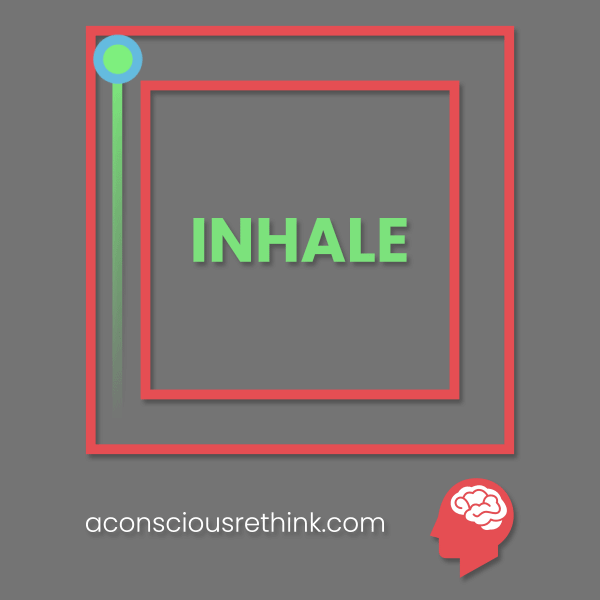The lens through which many view trauma is one of severity: to qualify as trauma, the event needs to be obviously severe.
This is why people often confuse trauma with Post-Traumatic Stress Disorder.
In more understanding circles, it’s accepted that someone who has been through something they themselves qualify as “terrible” would experience some troubles. Even in less understanding circles, you’d be hard-pressed to find anyone who isn’t at least a little understanding of a veteran having a hard time after returning from combat.
The problem is that trauma is much greater and more far-reaching than the extremes of human experience. Let’s quickly look at the definition of “trauma” from the American Psychological Association (APA.)
Trauma: an emotional response to a terrible event like an accident, rape, or natural disaster. Source.
The underlying trait of a traumatic experience is that it is an emotional response to a terrible event. The phrase “terrible event” covers a wide range of experiences. A person may experience trauma from things like finding a dead body, having a loved one die, being cheated on, being fired, or being attacked by a dog.
“Terrible event” is an easy way to account for various experiences that can leave a lasting impact. The problem is that a phrase like “terrible event” is entirely subjective. What’s terrible to one person may not be that big of a deal to another. Most people will agree that losing a loved one is a terrible and tragic event. Still, different people will respond to that event in different ways.
And that’s where Post-Traumatic Stress Disorder (PTSD) enters the picture. PTSD typically results from how a person’s mind reacts to a traumatic event. Everyone will experience traumatic events in their lives, that is, a disturbing emotional response to a terrible event. Normally, the person would experience various emotions as their brain guides them along its own healing process.
But that isn’t how it works for some people. For some, the event will cause lasting harm that prevents the person from healing and moving past the event.
Losing a parent is undoubtedly a traumatic experience for a person who has a good relationship with their parent. The response to that loss may be sadness, emptiness, and missing the person. On the other hand, a person who develops PTSD from that loss may find that any reminders of that person “trigger” overwhelming feelings.
What is a trauma trigger?
The definition is quite open to interpretation. Let’s start with the literal definition borrowed from the APA Dictionary of Psychology.
Trigger: a stimulus that elicits a reaction. For example, an event could be a trigger for a memory of a past experience and an accompanying state of emotional arousal.
The word trigger is typically used in the context of an event or experience that causes a severe reaction. That may be as severe as a combat veteran experiencing PTSD symptoms from being exposed to fireworks to the survivor of a dog attack experiencing a panic response to the sound of a barking dog.
But it may also be used in the broader context of mental illness. For example, people with Bipolar Disorder may experience a mood shift when they experience an event that causes their mind to shift toward mania or depression.
A trauma trigger specifically refers to an event that touches on a person’s trauma and causes a negative reaction. Not every combat veteran or dog bite survivor will develop this sensitivity to events related to their experiences. The after-effects of the trauma depend on how the person’s mind reacts to the event.
What happens when trauma is triggered?
Trauma is triggered when a person experiences an event associated with their trauma. The event causes their brain to immediately respond with thoughts and feelings related to that traumatic event.
As a result, the person may experience intrusive thoughts and feelings they cannot control. The lack of ability to control the response can significantly worsen the person’s mental health, cause anxiety and depression, interfere with their ability to conduct their lives, and negatively impact their relationships.
In addition, the trauma survivor may experience extreme emotions like panic or dissociation when triggered.
Let’s look at a few examples.
- A combat veteran returns from a warzone. Loud sounds like fireworks or a heavy object falling may cause the person’s mind to react as though there are gunshots. The person may find themselves flashing back to their time in service and responding as though they are still in combat. What if the person is home with their family or in the workplace? That traumatic trigger will cause many problems in that person’s relationships and how they conduct their life.
- A person survives a bad car accident. The car crash survivor may experience traumatic triggers from things like the smell of gasoline or the sound of car horns. Those kinds of trauma triggers will severely affect the survivor’s quality of life if they can’t drive or fuel up a car to go to work. Furthermore, there may be smaller effects that aren’t necessarily obvious. For example, perhaps they have a lawn to take care of but can’t replace their equipment with fuel without flashing back to that accident.
- A sexual assault survivor may have trauma triggers related to their assault. They may experience a panic or fear response from being touched a certain way, smelling a particular smell, or otherwise being reminded of their assault. Those responses can cause significant problems in how people conduct their relationships and interact with the world. For example, a sexual trauma survivor may find it difficult to be alone in a room with someone, affecting their ability to maintain employment.
These trauma triggers and examples are by no means an exhaustive list. They are just to show you how triggers and responses are related. The triggering of trauma can touch many areas of a person’s emotional responses, ranging from depression to Fight, Flight, or Freeze.
These emotional responses may be impossible to control on your own. Therefore, many people need some form of therapy or medication to help pull the responses under control to a manageable state. The triggered response is typically overwhelming, but treatment can make it much smaller and manageable.
How can you identify your trauma triggers?
Anyone with trauma will understand that this is far too devastatingly easy. However, an experience that evokes a traumatic experience is not something you tend to overlook. It’s not a small or quiet thing. A person who flashes back or is overwhelmed by panic when experiencing a traumatic trigger may experience several symptoms, all severe enough to be clearly noticeable.
Typical symptoms of PTSD include extreme anxiety, nightmares, and flashbacks. The person may also go out of their way to avoid potentially triggering situations. Substance abuse to cope with extreme emotional reactions is also possible.
Another thing to keep an eye out for are indirect trauma triggers. You may find it difficult to see the connection between these triggers and the traumatizing experience.
Consider a sexual assault survivor. During their assault, a particular show may have been playing on television. They weren’t necessarily aware of the show during the assault, but they still heard it in the background. The survivor might be triggered by that show in the future, sending their mind back to their assault, but they may not be able to draw a direct line between the two things on their own. A trauma therapist can help find and unwind these connections.
In that context, you want to look for the symptoms typically associated with trauma triggers. Chances are pretty good you won’t be able to analyze your situation when it is happening, but you can go back later and look at the situation in which you were triggered. Make a list of everything you remember about the situation that triggered you and try to identify a cause and effect.
It’s okay if you can’t. However, it may be something you need to sort out with a trauma therapist.
How can you deal with trauma triggers when they happen?
Self-management of trauma triggers is difficult because you’re often overwhelmed by what you’re experiencing. The time between a trauma trigger and your response may be less than a second. That’s not enough time to introduce additional actions between the stimulus and response. That’s okay, though. It’s just part of the struggle of dealing with a trauma trigger.
But what can you do when you’re able?
- Ground yourself in the present. Do what you can to keep your mind in the present instead of pulling back into the past. A common suggestion that works very well is to suck on an ice cube or hold one in your hand, then focus on the cold. The cold helps to keep your mind grounded in the present. You may also ask a loved one or someone in your support network to stick an ice cube in your hand if you trigger into such a mental space where you can’t do it for yourself.
- Remind yourself that this is a normal reaction. It’s okay to be triggered by a traumatic event. It’s normal for people with trauma to respond badly when they experience triggers. Don’t beat yourself up or minimize your experience. Instead, focus on accepting that this is an okay reaction for you to have. Remind yourself that this is only temporary, you will get through it, and you are in a safe place.
- Practice a breathing exercise to help calm your mind. A common breathing technique is used in meditation practices and for relaxation called “Box Breathing.” Basically, you inhale for four seconds, hold it for four seconds, exhale for four seconds, hold it for four seconds, and repeat. While you perform the exercise, you focus your thoughts on systematically counting the seconds. Don’t inhale or exhale hard, and don’t count fast. Just focus on the numbers and your breathing, which may help you to reground yourself in the present. The Box Breathing GIF below can help.

Trauma Flashback Protocol
The Trauma Flashback Protocol is a method of defusing flashbacks and bringing you back to the present. This system was adapted from the work of Babette Rothchild by Kent Smith circa 2009. You may find that these statements can help ground you back into the present, give you more time between trigger and response, and minimize the surge of emotion that comes with trauma triggers.
Right now I am feeling _____________ (e.g. scared, anxious, panicky, sad, etc).
And I am sensing in my body _____________ (e.g. heart racing, stomach tightening, shaking, sweating, dizzy, headache, nausea, etc).
Because I am remembering _____________ (e.g. the war, the bad things, the bad person, that awful stuff, etc).
And at the same time it is now _____________ (name the time, date and year—if necessary look at a clock, mobile phone etc).
And I am here at _____________ (name the place).
And I can see _____________ (name to yourself 5 objects you can see around you).
And so I know that _____________ is not happening now/any more.
In closing…
The bare truth is that trauma is not an easy thing to get through. It is extremely unlikely, if not impossible, to heal and make your trauma responses smaller without the assistance of a certified mental health professional. It’s simply too difficult of a problem and needs professional intervention.
The good news is that you can recover and not have your trauma triggers dominate your life. But, it will take some work to get there. Be aware that if you opt for trauma therapy, it will probably get worse before it gets better. People commonly lock their trauma away inside them, avoid their triggers, and just try to get through their day.
The longer it is unaddressed, the more intense and difficult it will be when you finally open that box it’s sealed away in. Therefore, you mustn’t quit therapy if things start getting worse. This is totally normal, and you will get through it. You just have to keep going and putting in that work.
You got this.
You may also like:
- Emotional Flooding: What It Is, Symptoms, Dealing With It
- 17 Big Signs You Are Healing From Trauma
- Healing Is Not Linear, So Don’t Give Up (15 Pieces Of Advice)
- 8 Emotional Self-Care Strategies: Take Care Of Yourself Emotionally
- 12 Radical Acceptance Coping Statements To Deal With Difficult Emotions
- Emotional Triggers: How To Identify, Understand, And Deal With Yours










